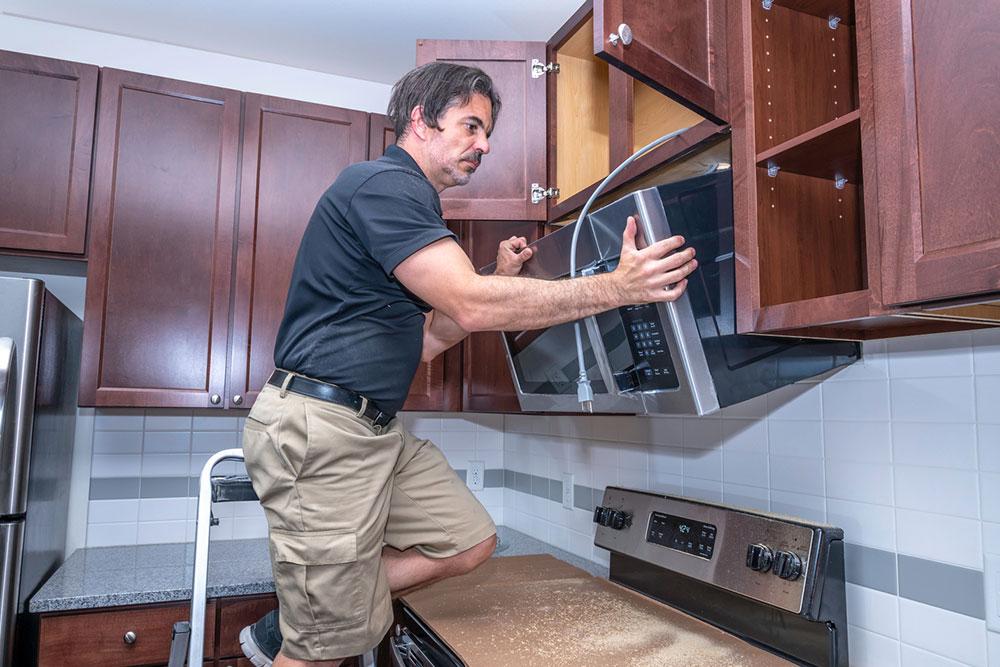5 home appliance improvement projects with the highest ROI

When discussing home improvement projects that ensure higher returns, the focus often drifts to major changes like patio building, back grade upgrading, bathroom upscaling, renovations, decor, or structural improvements. However, enhancing appliances is another salient feature that can hike the property price. Home appliances are some of the most used items in a house, and ensuring they are modern, efficient, highly functional, and up-to-date can fetch a higher return on investment (ROI).
Home appliance improvement projects that offer higher ROI
Energy-efficient appliances
Energy efficiency is a must in today’s world. Most home buyers are environmentally conscious and aware of their energy consumption. Data shows that electrical appliances, on average, consume around 14% of the total energy usage of a house. This includes stoves, ovens, refrigerators, dryers, and water heaters. Appliances that use energy efficiency also reduce utility bills and overall carbon footprint. These can include refrigerators, washing machines, and dishwashers. The easiest way to recognize an energy-efficient appliance is to look for the ENERGY STAR label. Choosing these certified appliances can be an attractive feature for eco-conscious homeowners.
Smart thermostats
Smart thermostats are intelligent temperature control systems where the thermostat recognizes homeowners’ overall heating and cooling preferences and adjusts the temperature accordingly. This is especially beneficial when there are changes in the external weather conditions. So, smart thermostats can optimize heating and cooling cycles and significantly reduce energy consumption. Not only that, but it can also give homeowners remote access. So, people can use their smartphones or other connected devices to control their home temperature and monitor energy usage even when away from home. Such control over energy consumption is sure to enhance the home value.
Induction cooktops
Making an induction upgrade means one can enhance both the safety and efficiency of the usage of a house. Traditional cooktops use burners or gas to generate heat, which are more prone to accidents. On the other hand, induction cooktops use electromagnetic technology to heat the cookware. They can control precise temperature and only heat the pots and pans placed on it instead of creating heat waves around the area. The initial investment might seem higher, but the long-term savings and the home value are much higher with the upgrade.
Tankless water heaters
Finding out suddenly that the water has turned cold in the middle of a shower or having to stop washing dishes mid-way due to lack of hot water can dampen the experience of living at a house. This is where a tankless water heater can come in handy. These energy-efficient units heat water on demand, thus saving energy, and tend to last 5 to 10 years more than the traditional tank water heaters. They do not require much maintenance and are also small, saving much-needed space in the house. So they are a great value addition to any home.
Energy-efficient HVAC systems
HVAC systems stand for heating, ventilation, and air conditioning, which, on average, use about 33% of a home’s energy. This is one of the reasons why it’s important to upgrade to an energy-efficient HVAC system. The systems also enhance the air quality and overall comfort of a home while optimizing energy based on one’s usage, thus saving money in the long run.
Warranty plans on home appliances
One can find several warranty plans on home appliances, which can further add to the home’s value. But numerous options flood the market, so it’s important to decide wisely when choosing the right one for your needs. Here are some things to look for in an insurance plan when it comes to home appliances:
- Ensure that the company offers emergency or weekend services as well, as these can be crucial in a time of need.
- Some plans cover working appliances regardless of age, which can be beneficial in the long run.
- It’s best to seek a warranty with a workmanship guarantee, which can last up to 60 days or more if possible.
- Some plans may provide coverage of a certain amount rather than per appliance, regardless of the appliance’s price. While this can be a good option for lower-priced appliances, it’s best to reconsider these plans for high-end costly appliances.
- It’s not always possible to know exactly what is wrong with the current appliance when it’s running smoothly, but there may still be some underlying issues that may crop up in the future. So, one’s advised to look for plans that cover the appliance’s known and unknown pre-existing conditions.
- Ensure that the plans also cover components like knobs and hinges of the appliances.
- Some plans require the owners to submit a claim as soon as an issue is discovered, but some plans give a period, like three days, for the same. While the time frame might not seem like much, it can be important in times of need.
Some warranties provide discounts to customers when they purchase new appliances. This not only helps to reduce the cost of replacing old or broken appliances, but it can also enhance safety by ensuring that one uses up-to-date and reliable equipment. So, if one is in the market for new appliances, it may be worth considering a warranty offering price cuts to help one save money while keeping one’s home safe.